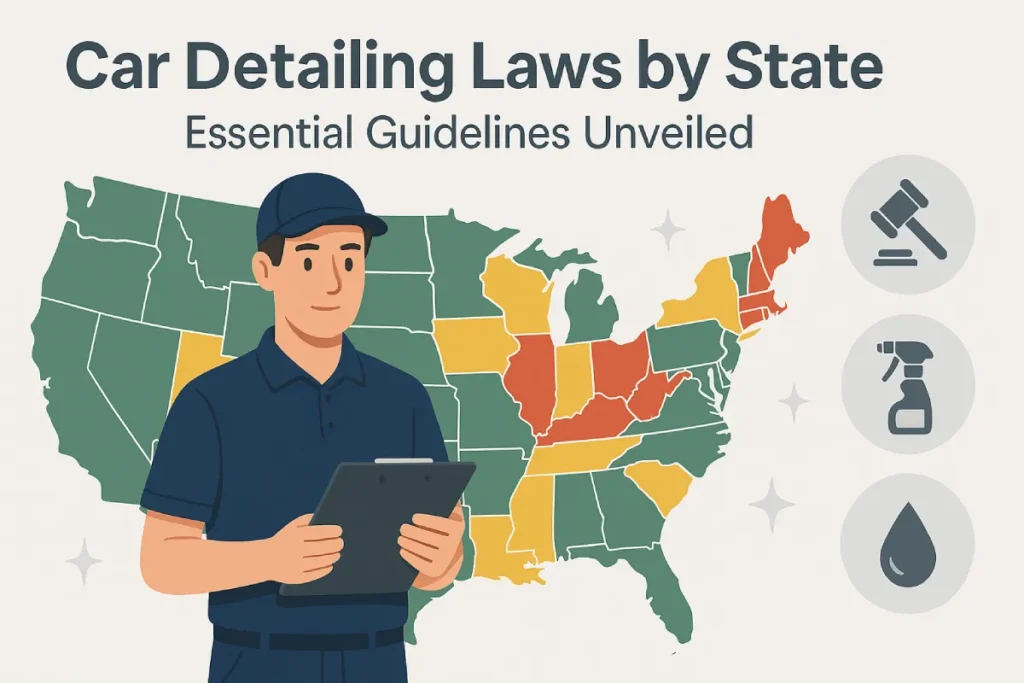When freezing weather hits, you might think keeping your car windows tightly shut is the safest way to stay warm. But did you know that a little fresh air can actually make your drive healthier and more comfortable?
If you’re looking for tips on safe car interior ventilation in freezing weather without letting in the cold or risking foggy windows, you’re in the right place. This guide will show you simple, practical tips to keep your car fresh and clear, even when the temperature drops below freezing.
Keep reading to discover how to breathe easy and drive safely in winter’s chill.
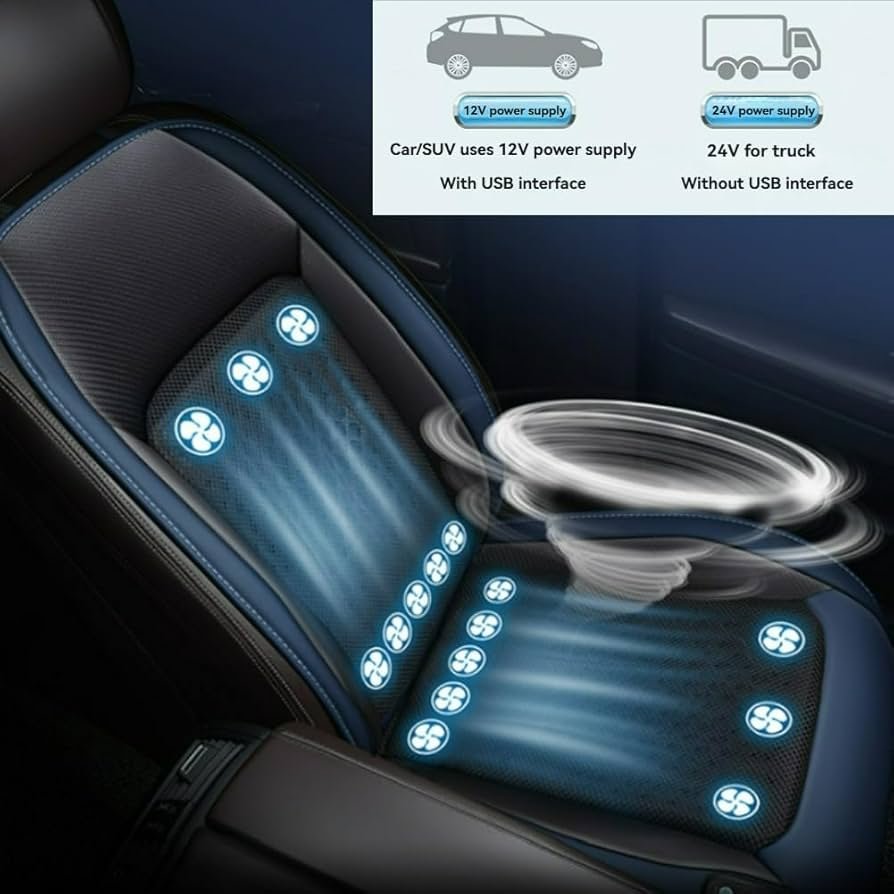
Credit: www.amazon.ca
Risks Of Ventilating In Freezing Weather
Ventilating a car in freezing weather poses unique risks. Cold air meets warm air inside the vehicle. This clash can cause problems that affect comfort and safety. Understanding these risks helps keep the car and passengers safe.
Fogging And Ice Buildup
Cold air entering a warm car causes the windows to fog up quickly. Moisture in the air freezes on the glass. This ice buildup blocks your view. It makes driving dangerous and stressful. Clearing fog and ice takes time and effort.
Temperature Fluctuations
Sudden temperature changes stress the car’s interior. Materials like plastic and leather can crack or warp. The heating system works harder to keep the cabin warm. This leads to more fuel use and wear on parts.
Health Concerns
Breathing in cold air can harm your respiratory system. It may cause coughing, sore throat, or breathing difficulty. Cold air also lowers body temperature quickly. This can lead to hypothermia if exposed too long. Proper ventilation helps avoid these health risks.
Best Ventilation Methods
Proper ventilation in a car during freezing weather keeps the air fresh and prevents fogging. It also helps maintain a comfortable temperature inside. Using the right ventilation methods can protect your health and improve visibility while driving.
Using Recirculation Mode Wisely
Recirculation mode keeps the warm air inside the car. It stops cold air from entering, which helps heat the car faster. But using it for too long can make the air stuffy. Switch to fresh air mode occasionally to bring in clean air. This balance prevents moisture buildup and reduces window fog.
Cracking Windows Safely
Cracking a window slightly lets fresh air flow in. It helps remove moisture and keeps the air inside dry. Open the window just a little to avoid too much cold air. This method works well when the car is parked or moving slowly. It also helps prevent fogging without losing much heat.
Utilizing Cabin Air Filters
Cabin air filters clean the air entering your car. They block dust, pollen, and pollution. Using good-quality filters improves air quality inside. Replace filters regularly for the best performance. Clean filters also help your ventilation system work efficiently in cold weather.
Winter car care doesn’t stop at ventilation—see our full guide on Protecting Leather Car Seats in Extreme Cold to keep your interior safe from cracking and stiffness
Preventing Ice And Frost Inside
Preventing ice and frost inside your car is key during freezing weather. Ice can block your view and make driving unsafe. Frost damages windows and can waste time clearing before trips. Proper ventilation helps reduce moisture, stopping frost from forming. A dry and clear interior keeps you safe and comfortable in cold months.
Defrosting Techniques
Start your car and turn on the defroster. Use warm air to melt ice on windows. Direct airflow to the windshield and side windows. Avoid using hot air quickly; it can crack glass. Use a scraper gently to remove leftover frost. Regular defrosting prevents thick ice build-up. According to AAA’s winter driving tips, proper airflow and defrosting are key to staying safe in freezing conditions.
Humidity Control
Moisture inside cars causes frost to form. Dry your car’s interior before parking. Use moisture absorbers, such as silica gel or charcoal bags. Avoid leaving wet items, such as snow-covered boots, inside. Air out the car by opening windows briefly on dry days. Lower humidity helps keep windows clear.
Keeping Windows Clear
Clean windows repel frost better. Use a glass cleaner to remove dirt and grease. Apply a thin layer of anti-fog spray to the inside of the glass. Keep window seals in good condition to stop leaks. Slightly crack a window when parked to allow fresh air. Clear windows improve visibility and safety.
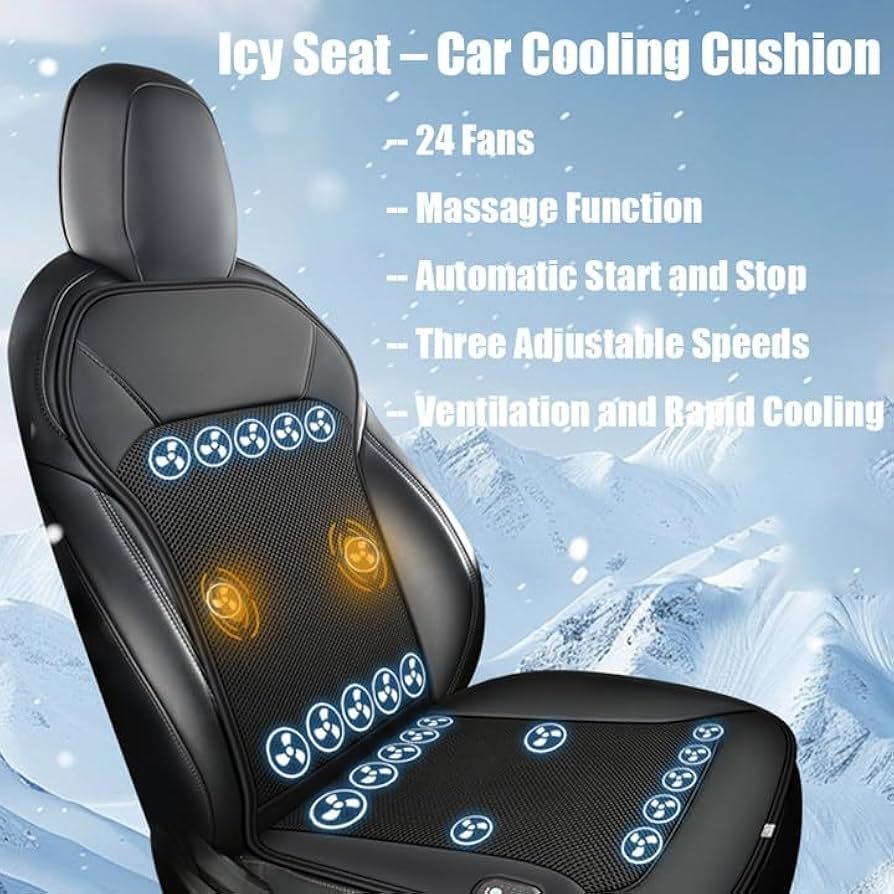
Credit: www.amazon.ca
Maintaining Air Quality
Maintaining good air quality inside your car is very important, especially in freezing weather. Cold air can make the inside of your vehicle feel stuffy or dry. Proper ventilation helps keep the air fresh and safe to breathe. It also reduces the risk of fogging on windows and keeps you comfortable during your drive.
Fresh Air Intake Tips
Open a small window slightly to let fresh air enter. This prevents the air inside from becoming stale. Use the car’s fresh air mode instead of recirculation. It brings in outside air and improves ventilation. Avoid opening windows wide in freezing weather to keep warmth inside.
Avoiding Pollutants
Keep the car clean to reduce dust and allergens. Remove trash and old food that can cause bad smells. Do not run the engine in a closed garage before driving. This can let harmful gases enter the car. Always check that the air intake vents are clear of snow or ice.
Using Air Purifiers
Air purifiers help remove dust and odors inside the car. Choose a small, portable purifier made for vehicles. It can improve air quality without using much power. Replace the purifier filter regularly for best results. This adds an extra layer of protection during cold months.
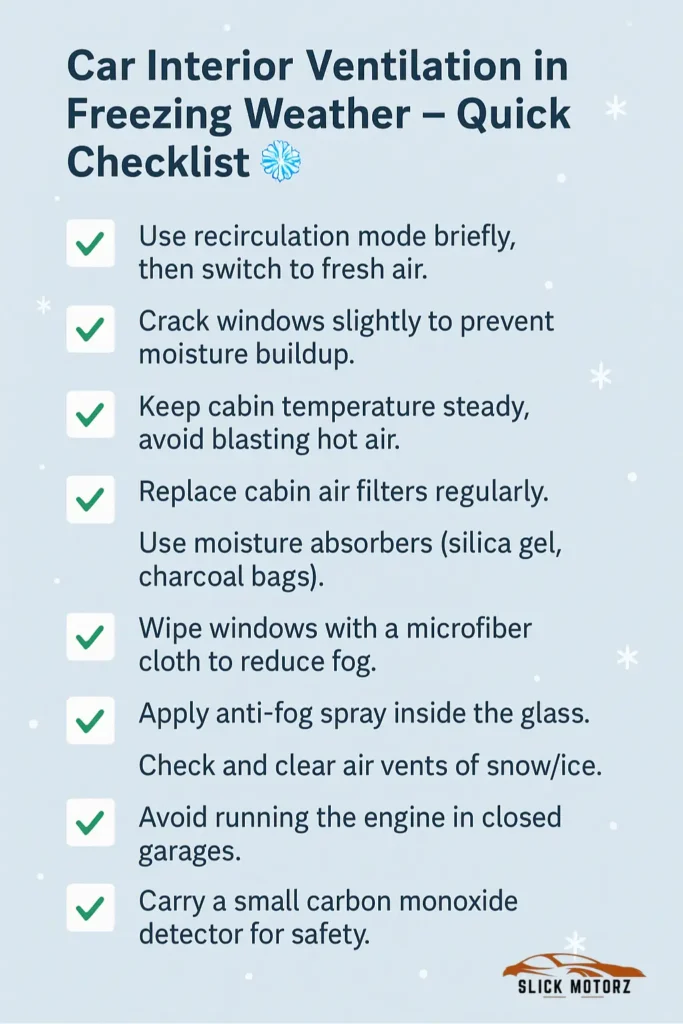
Additional Safety Measures
Taking extra steps helps keep your car safe and comfortable in freezing weather. These safety measures protect you from cold air and moisture problems. They also help your ventilation system work well during winter.
Monitoring Temperature And Humidity
Check the car’s temperature often. Too cold inside can cause frost or ice. Use a small thermometer or built-in sensors. Watch humidity levels too. High humidity can fog windows and make breathing hard. Keep the air dry by opening vents slightly to let moisture out.
Regular Ventilation System Maintenance
Clean your car’s air vents and filters regularly. Dust and dirt block airflow and reduce system efficiency. Replace cabin air filters every 12,000 to 15,000 miles. Inspect hoses and fans for damage or leaks. Well-maintained systems keep fresh air flowing and prevent cold drafts.
Emergency Ventilation Options
Keep a small battery-operated fan in your car. It helps circulate air if the main system fails. Crack a window open slightly for fresh air if safe. Carry a portable carbon monoxide detector. It warns you if dangerous gases build up inside the car during ventilation.
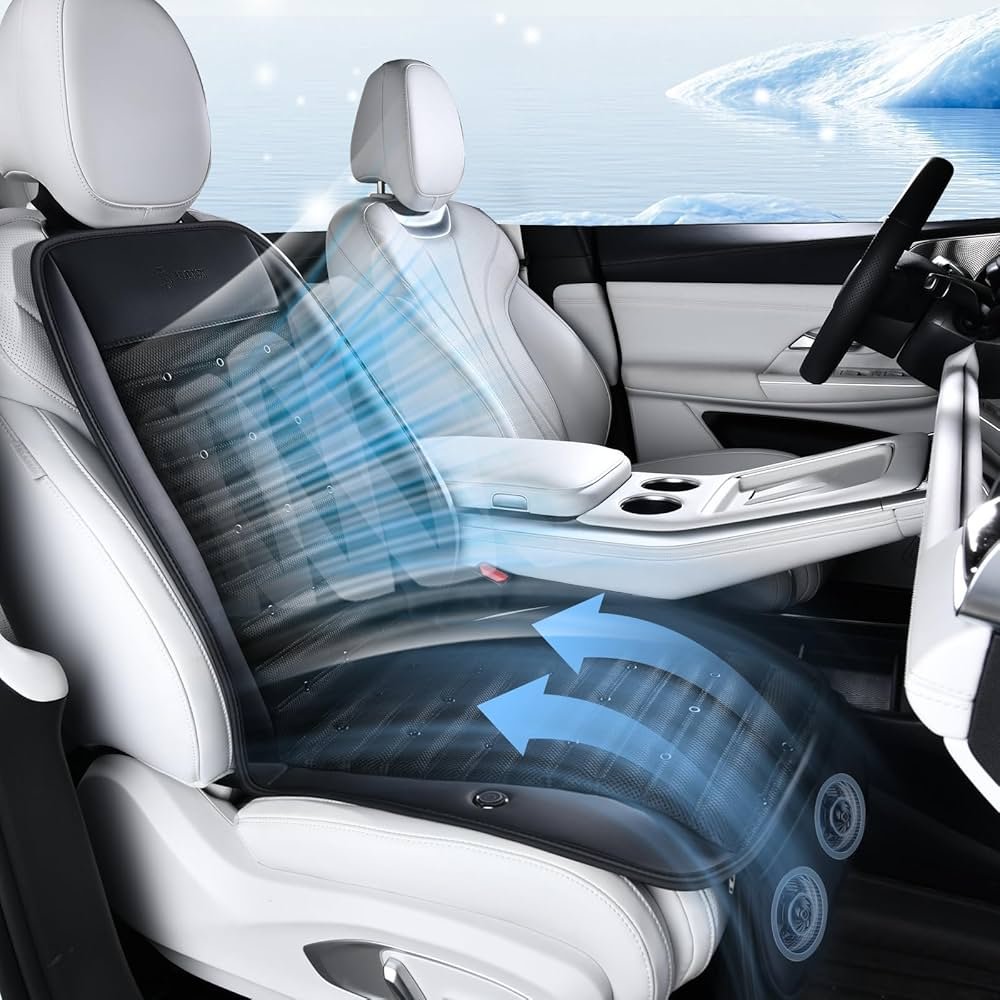
Credit: www.amazon.ca
Frequently Asked Questions
How Do I Safely Ventilate My Car In Freezing Weather?
To ventilate safely, crack a window slightly to allow airflow. Avoid fully opening doors to keep warmth inside. Use the car’s heater fan on low to circulate fresh air without losing heat quickly.
Can I Use Car Ventilation Without Losing Heat In Winter?
Yes, use the recirculation mode sparingly and open a small window. This balances fresh air intake and heat retention. Keep ventilation brief to maintain cabin warmth while preventing fog buildup.
Why Is Car Ventilation Important In Freezing Temperatures?
Ventilation prevents moisture buildup inside your car, reducing fog on windows. It also helps remove stale air and keeps the interior fresh. Proper airflow improves driver visibility and comfort during cold weather.
How Long Should I Ventilate My Car In Cold Weather?
Ventilate for 2 to 5 minutes before driving to clear stale air. Prolonged ventilation can cause heat loss, so keep it brief. Use heater settings to maintain warmth during ventilation.
Conclusion
Safe car interior ventilation in freezing weather keeps you warm and alert. Open windows slightly to let fresh air in without losing heat. Use the car’s heater and defroster to clear fog and ice. Avoid running the engine in a closed space to prevent harmful gas buildup.
Regularly check vents and filters for proper airflow. These small steps protect your health and improve driving comfort. Stay safe, breathe easy, and enjoy your winter drives.
For more seasonal prep tips, check out our checklist on Fall Car Interior Prep Before Winter, so your car stays ready and comfortable year-round.











